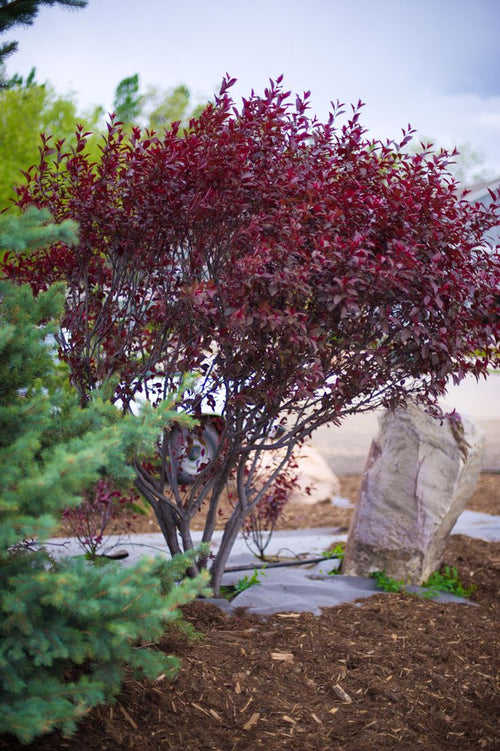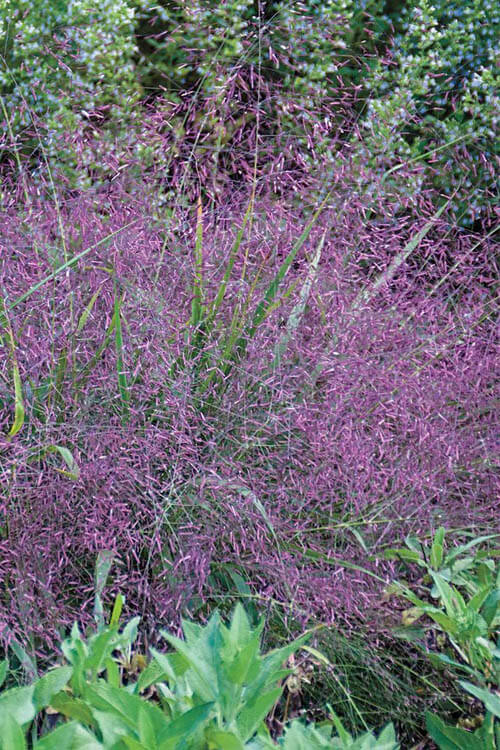Designing a Japanese-Style Garden
A Japanese-style garden, often referred to as a "Zen garden," exudes a sense of tranquility, balance, and harmony with nature. These gardens, rooted in ancient Japanese aesthetics, are carefully designed to provide a peaceful retreat where one can find solace, reflection, and a deep connection to the environment. One of the key elements that contribute to the allure of a Japanese-style garden is the careful selection and placement of plants. Among the many species used, Japanese Maple, Cistena Plum, Okame Cherry, Arborvitaes, Bald Cypress, ferns, and moss play significant roles in creating this serene landscape.
Japanese Maple Trees: A Symbol of Elegance and Grace
Japanese Maple trees (Acer palmatum) are revered for their exquisite foliage and graceful silhouette. These trees come in various cultivars with distinct leaf shapes, sizes, and colors, ranging from vibrant greens to deep purples and reds. Japanese Maple cultivars should reflect the desired mood and theme when creating a Japanese-style garden. For a more traditional look, consider varieties with delicate, lacy leaves. To add a splash of vibrant color, opt for cultivars with fiery red or orange leaves. Japanese Maple trees are often placed as focal points within the garden, their elegant forms drawing the eye and inviting contemplation. They can be featured as standalone specimens or grouped to create striking compositions. Their presence brings a sense of refinement and sophistication to the landscape, while their changing hues throughout the seasons provide a dynamic visual experience.
Cistena Plum Trees: Celebrating the Beauty of Spring
Cistena Plum trees (Prunus cerasifera 'Cistena') are renowned for their stunning display of spring blossoms. Their delicate, pale pink-to-white flowers usher in the changing seasons' beauty, symbolizing renewal and the fleeting nature of life. These trees are often associated with Japanese cherry blossoms, which hold deep cultural significance in Japanese aesthetics. When incorporating Cistena Plum trees into a Japanese-style garden, consider their placement to ensure they become focal points during the spring season. Their blossoms contrast beautifully against the backdrop of evergreen shrubs and other plants commonly found in these gardens. The flowers' transient nature emphasizes the impermanence central to Zen philosophy.
Okame Cherry Trees: A Celebration of Joy and Vitality
The Okame Cherry tree (Prunus 'Okame') is another delightful addition to a Japanese-style garden. Its early spring blooms burst forth in vibrant shades of pink, creating a spectacle of color that signifies vitality and joy. The Okame Cherry tree's compact size makes it an ideal candidate for smaller garden spaces or as part of a curated arrangement. Placing Okame Cherry trees strategically throughout the garden ensures their cheerful blooms infuse the space with energy and enthusiasm. These trees can be positioned along pathways, near seating areas, or within view of contemplative spots. Their blossoms, a representation of the transient beauty of life, resonate with the garden's overarching themes.
Arborvitaes: Conveying Balance and Structure
Arborvitaes (Thuja) are evergreen shrubs that bring structure and order to a Japanese-style garden. These versatile plants serve as natural dividers, creating distinct spaces within the garden while maintaining an organic flow. The dense foliage of Arborvitaes offers privacy and a sense of enclosure, allowing visitors to feel immersed in their surroundings. When incorporating Arborvitaes, consider using them to define the edges of the garden, screen unsightly views, or create a backdrop for other plants. Their vertical growth and consistent green color contribute to the garden's harmonious balance between nature and design.
Bald Cypress: Embracing Change and Adaptation
Bald Cypress (Taxodium distichum) is a deciduous conifer that embodies the theme of change and adaptation in a Japanese-style garden. The Bald Cypress symbolizes the transformation cycle with its unique appearance, characterized by feathery foliage that turns a warm, coppery hue in the fall. These trees are often placed near water features or in low-lying areas, where they can reflect in still water and create a mesmerizing scene. Incorporating Bald Cypress trees introduces an element of dynamic change to the garden. Their seasonal transformations echo the impermanence inherent in nature and align with the garden's Zen-inspired philosophy.
Ferns and Moss: Invoking Serenity and Simplicity
Ferns and moss are indispensable components of a Japanese-style garden, contributing to the understated beauty and tranquility of the landscape. Ferns, with their delicate fronds, thrive in shaded areas, providing a lush ground cover that softens the terrain. Moss, often cultivated on rocks, pathways, and around water features, adds a touch of ancient charm and quiet elegance. Incorporating ferns and moss creates a verdant tapestry that invites meditation and reflection. The gentle rustling of ferns and the velvety texture of moss underfoot evoke a sense of calm and connectedness with the natural world. In conclusion, designing a Japanese-style garden requires carefully selecting and arranging plants that embody the principles of balance, harmony, and the interconnectedness of nature.
Japanese Maple, Cistena Plum, Okame Cherry, Arborvitaes, Bald Cypress, ferns, and moss contribute uniquely to this tranquil landscape. Whether it's the elegance of the Japanese Maple, the ethereal blossoms of the Cistena Plum, the joyful blooms of the Okame Cherry, the structured form of Arborvitaes, the changing foliage of the Bald Cypress, or the serenity of ferns and moss, these elements come together to create a space of profound beauty and contemplation. In this haven, one can find respite and rejuvenation amidst the bustle of modern life.



















































